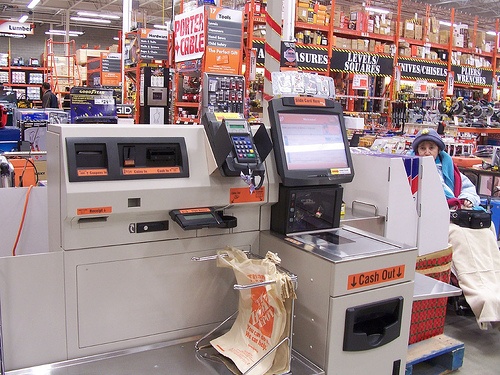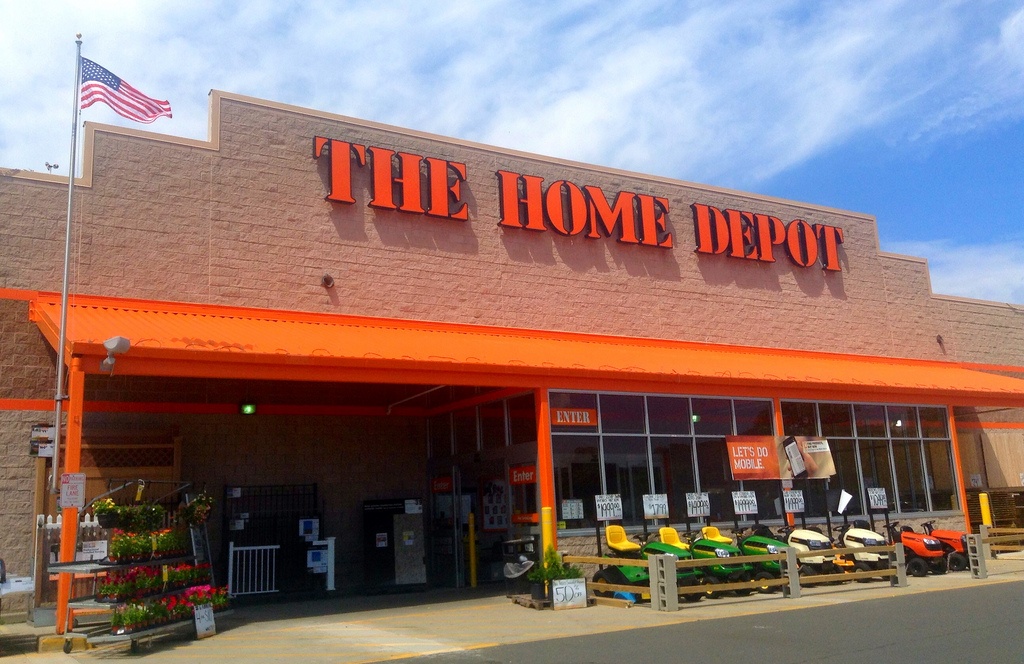Times have been tough for retail—with office supply purveyors, department stores, and even the auto industry feeling the pinch—as customers spend cautiously in the wake of, and amidst potential new signs of, economic turmoil. But there are two categories still cashing in: home improvement and e-commerce.
The Home Depot, whose shares reached an all-time high earlier this month, is the biggest player in one of these sectors and moving into the other. With demographic trends only favoring further growth, they are looking to expand their business as homeowners expand their kitchens and bathrooms. According to CEO Craig Menear, “We’ve been fortunate that we’re in a space where customers are willing to spend.”
Orange is in the Black
The home improvement superstore operates 2,275 locations in all 50 states, and hedge funds have been buying up their stock all year. It seems like they are on to something: Same stores sales are up 7.4% this year and their net income rose 14% to $1.8 billion. In May, they even raised their full year outlook—a bold stroke that speaks volumes about their security in the year ahead.
Why so confident? Well, for one, despite downturns in the retail sector, the housing market is up: April was the highest month in home sales since 2008. More home sales, obviously, mean more home improvements. Yet even a slow housing market wouldn’t be the worst news: “If people aren’t moving, they’re clearly investing in their homes. That is [also] a project driver,” Menear offered.
But there is something else going on here too: as the economy has recovered, people have been hesitant to go on retail spending sprees, favoring an investment in their home over a family vacation or newer car. This is great news for the big orange as people prudently endeavor to boost their home value with their disposable income.
Demographics Favoring the Depot
Their fortunes seem likely to continue. According to one analyst, “The industry is still only in the middle innings of a recovery in home remodeling projects, and Home Depot is well-positioned to exploit this opportunity.”

How can we be so sure? Simple math, that’s how.
Millennials have finally started to age into home ownership, with the oldest right at the median age for first home purchase, 35 years. They now account for 35% of new household formation and that number is only going to increase; one popular theory within the company is that the generation is roughly six years behind traditional home ownership patterns—six lost years of recession and debt—but are now moving out of urban apartments and into suburban houses. UBS analyst Michael Lasser predicts millennials will be their primary customers in the next 10 years, and they are already beefing up their e-commerce capabilities in anticipation. Homes will soon become millennials’ newest canvases for self-expression.
But millennial home ownership isn't the only thing that will build up Home Depot. Baby Boomers are starting to reach an age where they simply can’t do everything for themselves. For a business that banks on do-it-yourself customers, this could be a problem. Yet they have worked to expand their “do it for me” business that not only offers the materials but professional services for planning and building.
And finally, in addition to millennials and boomers, something else is getting older too: homes themselves. Since the housing bubble burst, construction has decreased and houses have reached a median age of 37 years.
Higher than Lowes
Of course, as Lowe’s would be quick to remind us, The Home Depot isn’t the only heavy hitter in the game. But they are the heaviest—their 1.5 billion customer transactions last year easily dwarfed Lowe’s 878 million. They have 22% more stores and conduct 43% more business.
A rising tide lifts all boats—it just lifts the bigger ones higher. In home-improvement, and retail more broadly, right now nobody is as high as Home Depot.


